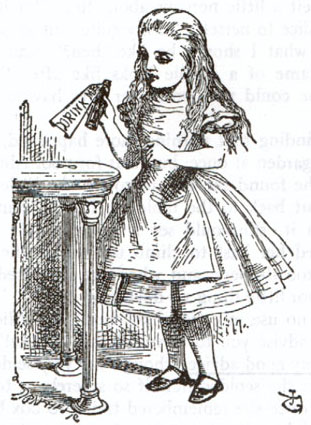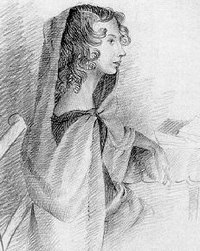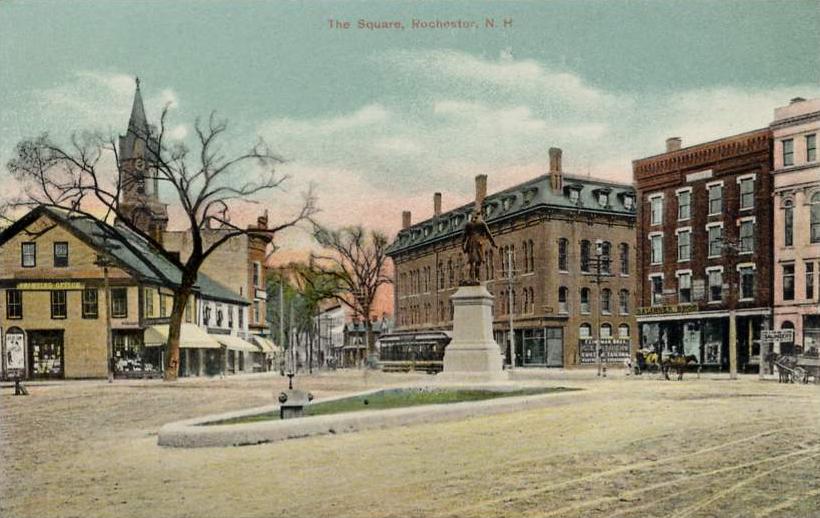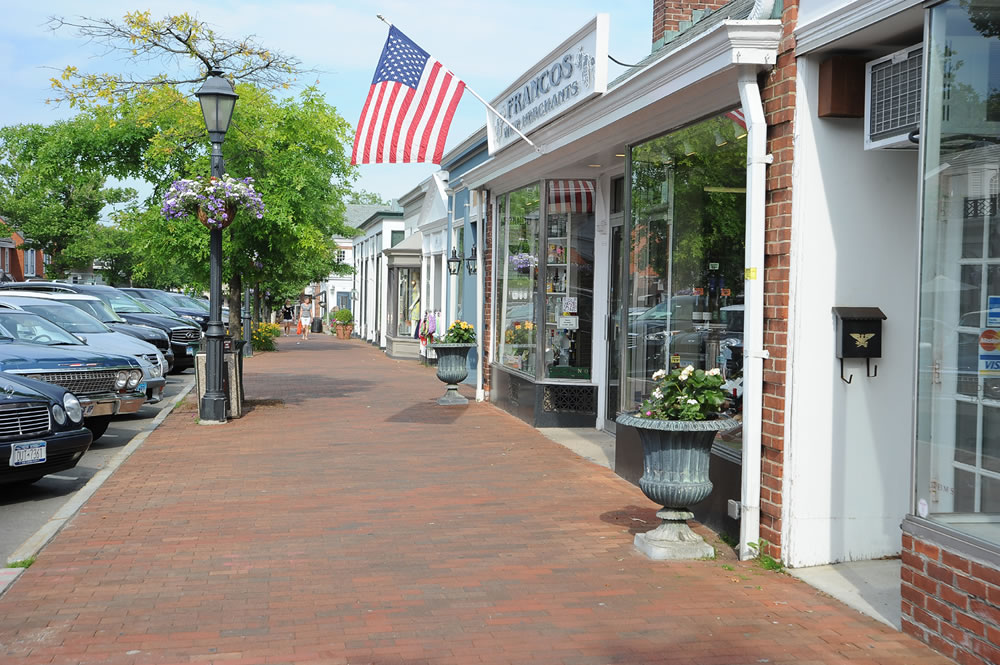Amphitryon: Tiryns (ruins) nr Nauplion, Peloponnese, Greece
Jean Giraudoux (1882-1944) BP: Musee Jean Giraudoux, 4 Avenue Jean Jaures, Bellac, Limousin, France. Buried: Cimitiere du Passy, 16eme, Paris, France. Les Deux Magots, 6 Place Saint-Germain-des-Pres, 6eme, Paris, France.
The birthplace museum does not appear to have a web page. Les Deux Magots is associated with many more renowned artists and writers than Giraudoux and is well-known to be an expensive tourist trap nowadays. I would not have put it up here except that it turned up numerous times in my researches as particularly associated with Jean Giraudoux, and perhaps I will want to go there at some point, seeing as I will likely be an old and from the social standpoint totally insignificant tourist if I ever do go back to Paris at this point, and people like that are supposed to go to places like this anyway.
Alcmene: Buried: nr Olympieum, Megara, Attica, Greece
Heracles: Heracles of Mantinea (sculpture), Louvre, 1ere, Paris, France. Torre de Hercules, La Coruna, Galicia, Spain. Heracles Gate, Ephesus, Turkey. Caves of Hercules, Tangier, Morocco
S. N. Behrman (1893-1973) Birthplace: 31 Providence Street, Worcester, Massachusetts. Died in New York, New York. College: Harvard
A playwright and New Yorker-type writer, widely admired by fellow writers of this school, from the 1930s-60s. Associated with the famous Lunts, who starred in several of his productions. I had never heard of him before.
Alfred Lunt (1892-1977) Birthplace: Milwaukee, Wisconsin. Buried: Forest Home Cemetery, Milwaukee, Wisconsin. Ten Chimneys, Genessee Depot, Wisconsin. College: Carroll (Wisc.)
Lynn Fontanne (1887-1983) Birthplace: Woodford, London, England. Buried: Forest Home Cemetery, Milwaukee, Wisconsin. Ten Chimneys, Genessee Depot, Wisconsin.
Robert Burton (1576-1640) The Anatomy of Melancholy (1628) Birthplace: in trees behind Motor Industries Association Research Building, Linley, Leicestershire, England. Buried: Christ Church Cathedral, Oxford, Oxfordshire, England. College: Oxford (Brasenose).
Floyd Dell (1887-1969) Birthplace: Barry, Illinois. Buried: We don't know.
Paul Jordan-Smith (1885-1971) Birthplace: Wytheville, Virginia (?). Buried: Newbern Cemetery, Dublin, Virginia.
Democritus (460-370 B.C.) Birthplace: Abdera, East Macedonia & Thrace, Greece.
Samuel Johnson (1709-1784) Birthplace: Samuel Johnson Birthplace Museum, Breadmarket Street & Market Square, Lichfield, Staffordshire, England (*****7-6-01*****) Buried: Westminster Abbey, Westminster, London, England. Dr Johnson's House, 17 Gough Square, City, London, England
Hans Christian Andersen (1805-1875) Andersen's Fairy Tales (fr. 1835) Birthplace: Bangs Boder 29, Odense, Denmark. Buried: Assistens Kirkegard, Copenhagen, Denmark Hans Christian Andersen Museum 1680 Mission Drive, Solvang, Santa Barbara, California. Hans Christian Andersen Fairy-Tale House, Radhuspldsen 57, Copenhagen, Denmark. Hans Christian Andersen Place, Hans Christian Andersens Boulevard 22, Copenhagen, Denmark.
The website for the birthplace museum no longer appears to be up. I hope it is still open. I believe there are a couple of other small sites in Copenhagen to see as well, but information on the internet is poor, or perhaps it is only available in Danish, though that seems unlikely to me.
The North Pole.
MacKinlay Kantor (1904-1977) Andersonville (1955) Birthplace: Webster City, Iowa. Buried: Graceland Cemetery, Webster City, Iowa.
Andersonville National Historic Site, Andersonville, Georgia
Mikhail Sholakhov (1905-1984) And Quiet Flows the Don (1928) Birthplace: State M.A. Sholokhov Museum Reserve, Veshenskaya, Rostov Oblast, Russia. Buried: Farm, Veshenskaya, Rostov Oblast, Russia. Museum Complex Mikhail Sholokhov, Daryinskoye, Kazakhstan. Don River, Russia.
Joseph Stalin (1878-1953) Birthplace: Joseph Stalin Museum, Gori, Georgia. Buried: Kremlin Wall Necropolis, Moscow, Russia.
I include him here because he was name dropped in one of the outlines and was obviously a significant historical figure of the 20th century. Obviously I am for some reason wary of seeming to honor bad people whose awfulness it will be assumed I can not begin to understand. No one cares about me or my lists or my politics or my historical or literary understanding. Intellectually I am about as alone in the world as one can be. I almost certainly will never go to these sites and maybe would not go to Gori even if I had endless leisure and money to visit every place on these lists. Though maybe I would, because the system calls for it and the purpose of the system is to lead me to certain kinds of experiences irrespective of their moral implications, and the two sites here certainly would be representative of those types of experiences.
Philip Barry (1896-1949) The Animal Kingdom (1932) Birthplace: Rochester, Ulster, New York. Buried: Most Holy Trinity Catholic Cemetery, East Hampton, Suffolk, New York. College: Yale
George P Baker (1866-1935) Born: Providence, Rhode Island. Buried: Swan Point Cemetery, Providence, Rhode Island. College: Harvard
Margaret Landon (1903-1993) Anna and the King of Siam (1944). Born: Somers, Wisconsin. Buried: Wheaton Cemetery, Wheaton, Illinois. College: Wheaton (IL)
Anna Leonowens (1831-1915) Born: Ahmednagar, India. Buried: Mount Royal Cemetery, Montreal, Quebec, Canada. Anna Leonowens Gallery, Nova Scotia College of Art & Design, 1891 Granville Street, Halifax, Nova Scotia, Canada.
Rama IV of Thailand (1804-1868) Born: Old Thonburi Palace, Bangkok, Thailand. Buried: Wat Ratchapradit, Bangkok, Thailand. Somdet Phra Narai National Museum, Lopburi, Thailand. Bang Pa-In Royal Palace, Bang Pa-In, Thailand.
Rama V of Thailand (1853-1910) Born: Bangkok, Thailand. Buried: Royal Burial Ground, Wat Benchamabophit, Bangkok, Thailand. Phya Thai Palace, Bangkok, Thailand.
Richard Rodgers (1902-1979) Born: Brandreth Avenue, Hammels Station, Queens, New York. Buried: Ashes scattered at sea. College: Juilliard. Richard Rodgers Theatre, 226 West 46th Street, New York, New York.
Oscar Hammerstein (1895-1960) Born: New York, New York Buried: Ferncliff Cemetery, Hartsdale, Westchester, New York. Highland Farm Bed & Breakfast, 70 East Road, Doylestown, Pennsylvania. Highland House, Montego Bay, Jamaica. College: Columbia
Curious that both extant residences are inns now, though the Pennsylvania location begins at $160 a night while the Jamaica house ranges from $6,500 to $8,500 a week (I am assuming the Jamaican rates are in US dollars).
Pauline Lord (1890-1950) Born: Hanford, Kings, California. Buried: Kensico Cemetery, Valhalla, Westchester, New York.
Leo Tolstoy (1828-1910) War and Peace (1865-9), Anna Karenina (1877) Born: Yasnaya Polyana (Museum-Estate of Leo Tolstoy), Tula, Russia. Buried: Yasnaya Polyana, Tula, Russia. Leo Tolstoy State Museum, 11/8 Prechistenka, Moscow, Russia. Leo Tolstoy Museum, 21 Leo Tolstoy Street, Moscow, Russia. Leo Tolstoy Museum, 12 Patnitskaya, Moscow, Russia.
Hervey Allen (1889-1949) Anthony Adverse (1933) Born: Pittsburgh, Pennsylvania. Buried: Arlington National Cemetery, Arlington, Virginia. College: Pittsburgh
Sophocles (495-406 B.C.) Antigone (c. 440 B.C.), Oedipus Rex (429 B.C.), Electra (411-410 B.C.) Born: Colonus (Athens), Attica, Greece. Buried: Along road to Deceleia, (Athens), Attica, Greece. The Sophoclean, Louvre, 1ere, Paris, France. Bronze Head, British Museum, Bloomsbury, London, England.
Jean Anouilh (1910-1987) Born: Cerisole, Bordeaux, Gironde, France. Buried: Cimitiere de Pully, Lausanne, Switzerland.
Katharine Cornell (1893-1974) Born: Berlin, Germany. Buried: Tisbury Village Cemetery, Tisbury, Dukes, Massachusetts. College: SUNY-Buffalo
Cedric Hardwick (1893-1964) Born: Lye, Worcestershire, England. Buried: Golders Green Crematorium, Golders Green, London, England. College: Royal Academy of Dramatic Art.
Creon (683 B.C.?-???) Born: Thebes, Central Greece, Greece
Plutarch (46-120) Born: Chaeronea, Central Greece, Greece. Bust, Museum of Delphi, Delphi, Central Greece, Greece.
Guthrie McClintic (1893-1961) Born: Seattle, Washington. College: Washington (Mo.)
Lepidus (c.89-12 B.C.) Born: Rome, Italy.
Pompey the Great (106-48 B.C.) Buried: Albano Laziale, Lazio, Italy.
Sholem Asch (1880-1957) The Apostle (1943) Born: Kutno, Poland. Buried: Golders Green Jewish Cemetery, Golders Green, London, England. Beit Sholem Asch Museum, 50 Arlozorov Street, Bat Yam, Israel.
St Paul (5-67) Born: Tarsus, Turkey. Buried: Basilica of St Paul Outside the Walls, Rome, Italy.
John O'Hara (1905-1970) Appointment in Samarra (1934) Born: 125 Mahantango St, Pottsville, Pennsylvania. Buried: Princeton Cemetery, Princeton, New Jersey. John O'Hara House, 606 Mahantango Street, Pottsville, Pennsylvania. Harrisburg, Pennsylvania
Don Marquis (1878-1937) archy and mehitabel (1927) Born: Walnut, Illinois. Buried: Maple Grove Cemetery, Kew Gardens, Queens, New York.
George Herriman (1880-1944) Born: 348 Villere Street, New Orleans, Louisiana. Buried: Monument Valley, Arizona (ashes scattered).
Geroge Bernard Shaw (1856-1950) Arms and the Man (1894), Caesar and Cleopatra (1900), Man and Superman (1903), Pygmalion (1912) Born: 33 Synge Street, Dublin, Ireland *****(9-3?-96)***** Buried: Garden of Shaw's Corner, Ayot St Lawrence, Hertfordshire, England.
When I visited in 1996, the Shaw birthplace was open as a museum, though several places on the internet state that it is not currently open.
Oscar Straus (1870-1954) Born: Vienna, Austria. Buried: Friedhof Bad Ischl, Bad Ischl, Austria.
Jules Verne (1828-1905) 20,000 Leagues Under the Sea (1870), Around the World in 80 Days (1873) Born: 4 Rue Olivier-de-Clisson, Ile Feydeau, Nantes, Pays de la Loire, France. Buried: La Madeline Cemetery, Amiens, Picardie, France. Musee Jules Verne de Nantes, 3 Rue de l'Hermitage, Nantes, Pays de la Loire, France. Le Jules Verne Restaurant, Tour Eiffel, 5 Avenue Gustave Eiffel, 7eme, Paris, France. Maison de Jules Verne, 2 Rue Charles Dubois, Amiens, Picardie, France.
Nellie Bly (1864-1922) Born: Burrell Township, Pennsylvania. Buried: Woodlawn Cemetery, Bronx, New York. Nellie Bly's (Ice Cream Parlor), 529 Main Street, Riverton, New Jersey.
Sinclair Lewis (1885-1951) Main Street (1920), Babbitt (1922), Arrowsmith (1925), Dodsworth (1929) Born: Sinclair Lewis Boyhood Home, 812 Sinclair Lewis Avenue, Sauk Centre, Minnesota. Buried: Greenwood Cemetery, Sauk Centre, Minnesota. Sinclair Lewis Interpretive Center and Museum, I-94 & Highway 71, Sauk Centre, Minnesota. Sinclair Lewis Park, Sauk Centre, Minnesota. College: Yale
Gladys Hasty Carroll (1904-1999) As the Earth Turns (1933) Born: Rochester, New Hampshire. Buried: Hasty Family Cemetery, South Berwick, Maine. College: Bates.
Luigi Pirandello (1867-1936) Six Characters in Search of an Author (1921), As You Desire Me (1931) Born: Casa Museo de Luigi Pirandello, Contrada Caos SS 15, Agrigento, Sicily, Italy. Buried: Same as Birthplace, Agrigento, Sicily, Italy. College: Bonn
Greta Garbo (1905-1990) Born: Blekingegatan 32, Stockholm, Sweden. Buried: Skrogskyrkogarden Cemetery, Stockholm, Sweden. Villa Garbo (Hotel) 62 Boulevard d'Alsace. Cannes, Provence-Alpes-Cote d'Azur, France.
Thomas Lodge (1558-1625) Born: High Street, West Ham, Newham, London, England. College: Trinity (Oxford).
Robin Hood Born: Loxley, Sheffield, Yorkshire, England. Buried: Kirklees Priory, near Mirfield, Yorkshire, England. Nottingham Castle, Nottingham, Nottinghamshire, England.
There are currently plans for a 13-20 million pound Robin Hood-themed castle/tourist attraction to be built in Sherwood Forest. Stay tuned.
Algernon Charles Swinburne (1837-1909) Atalanta in Calydon (1865) Born: 7 Chester Street, Belgravia, London, England. Buried: Churchyard, St Boniface Church, Bonchurch, Isle of Wight, England. College: Balliol (Oxford)
Atalanta: Calydon (Aetolia), West Greece, Greece. "Atalanta", Jay Gould's Railroad Car, Jefferson, Texas.
Andrew Lang (1844-1912) Born: Viewfield House, Selkirk, Borders, Scotland. Buried: East Cemetery, St Andrews, Fife, Scotland. College: Balliol (Oxford)
Elizabeth Barrett Browning (1806-1861) Aurora Leigh (1857) Born: nr intersection of Kelloe-Coxhoe Road & B6291, Kelloe, Durham, England. Buried: Cimitero Accatolico, Florence, Tuscany, Italy. Greenwood Great House, Montego Bay, Jamaica. Armstrong-Browning Library, 710 Speight Avenue, Waco, Texas. Casa Guidi, Piazza San Felice 8, Florence, Tuscany, Italy
Gertrude Stein (1874-1946) The Autobiography of Alice B Toklas (1933) Born: 850 Beech Avenue, Allegheny West, Pittsburgh, Pennsylvania. Buried: Pere Lachaise Cemetery, 20eme, Paris, France. College: Radcliffe
Alice B Toklas (1877-1967) Born: San Francisco, California. Buried: Pere Lachaise Cemetery, 20eme, Paris, France.
Oliver Wendell Holmes (1809-1894) The Autocrat of the Breakfast Table (1858) Born: Cambridge, Massachusetts (just north of Harvard Yard) Buried: Mount Auburn Cemetery, Cambridge, Massachusetts. College: Harvard.














